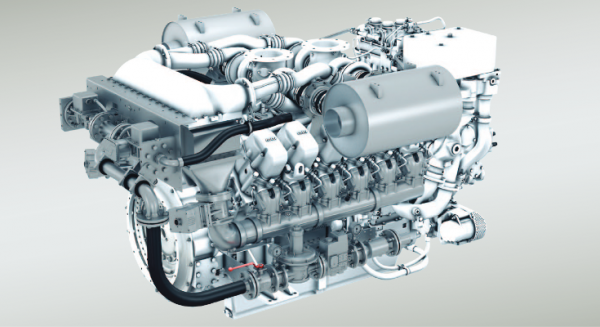Performance, comfort or image?
Tobias Kohl, senior manager at MTU discusses the configuration of a yacht’s propulsion system…

Will the mobility of the future be based solely on electric power? In the car industry, which is leading the way in this field, it certainly looks like it. Electric motors instead of combustion engines, charging points instead of petrol stations – development work is in full swing. But electric power is not just for cars with a particularly eco-friendly image.
Electric propulsion systems for marine applications are nothing new but the demand is growing, motivated by rising fuel costs, tougher emission requirements and – particularly in the yacht sector – the increase in comfort offered by quiet electric motors. Ships today are complex systems, which makes it something of a challenge to integrate new technologies. However, that is not the only hurdle to overcome. At least as important is the answer to the question of how a yacht is going to be used; whether that is for private use only on a day-to-day basis or available for charter makes a significant difference in terms of its range. This means that, depending on the application, the same yacht will need a different system configuration. But shipyards are not clairvoyants. It is very difficult for them to determine how an owner will operate the vessel throughout its entire service life.
What the client wants ultimately determines the choice of technology, whether that be performance, comfort or a green image. In order to run a luxury yacht quietly and with zero emissions, batteries with a high storage capacity are required. If a sports yacht designed for high speed is to reach its maximum potential, it needs to have batteries with a high-power output and short charge cycles. If the client’s sole concern is to have low noise levels, then batteries are not absolutely essential. This is because noise levels can also be reduced using fully encapsulated, acoustically insulated gensets.
"In order to run a luxury yacht quietly and with zero emissions, batteries with a high storage capacity are needed. If a sports yacht designed for high speed is to reach its maximum potential, it needs to have batteries with a high-power output and short charge cycles."
In commercial marine applications, this combination of combustion engine and electric motor results in low operating costs from the significant reduction in fuel consumption and longer maintenance cycles. This is a calculation, however, that is rarely the main priority of private yacht owners. They tend to be more interested in added comfort at cruising speeds because hybrid solutions gives the client various levels of freedom such as fully electric propulsion without engines or the use of gensets with exhaust gas after treatment. This also offers the option of silent cruising at night or meals on board without the smell of diesel and soot in the air, or being able to follow routes close to the coast despite the more stringent emission requirements there.
Intelligent planning is important to meet the many different demands. This begins with intensive consultations with the yacht owner or, if that is not possible, with the best possible specifications by the shipyard of the planned use of the vessel to enable the power and energy demand of the electrical components, batteries and electric motors to be determined. Other factors include new emission guidelines such as IMO III. This makes it possible for propulsion engines meeting IMO III requirements to be installed and operations to be carried out in accordance with IMO III at a later date at a reduced electrical power output using an electric motor and IMO III-compliant gensets. This needs the use of flexible, module-based configurable propulsion and on-board power systems. The system provider can then interpret the shipyard’s and/or owner’s requirements and translate them into the optimum design and layout of the components required – a major challenge, but one that can be met with the appropriate system expertise. To this end, it is imperative that all the individual components are cooled and have interfaces that are optimally matched to each other.
Hybrid systems are far more complex than conventional systems because of the number of additional components that communicate and exchange energy with each other alone. Optimally matched systems from a single source reduce to a minimum the amount of integration effort required by the shipyard and the operator. When the yacht is finally sailing the high seas, systems that are easy and safe to use are designed to ensure that the owner, captain, crew and passengers are able to focus solely on the pleasures and comforts on board!
Image courtesy of MTU
Profile links
NEW: Sign up for SuperyachtNewsweek!
Get the latest weekly news, in-depth reports, intelligence, and strategic insights, delivered directly from The Superyacht Group's editors and market analysts.
Stay at the forefront of the superyacht industry with SuperyachtNewsweek
Click here to become part of The Superyacht Group community, and join us in our mission to make this industry accessible to all, and prosperous for the long-term. We are offering access to the superyacht industry’s most comprehensive and longstanding archive of business-critical information, as well as a comprehensive, real-time superyacht fleet database, for just £10 per month, because we are One Industry with One Mission. Sign up here.
NEW: Sign up for
SuperyachtNewsweek!
Get the latest weekly news, in-depth reports, intelligence, and strategic insights, delivered directly from The Superyacht Group's editors and market analysts.
Stay at the forefront of the superyacht industry with SuperyachtNewsweek



